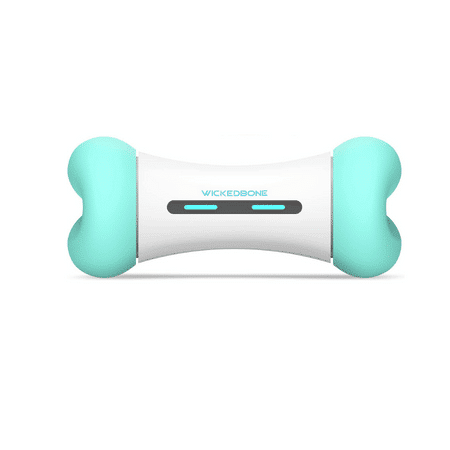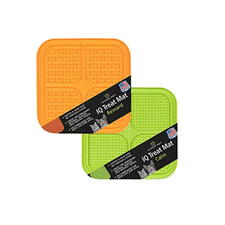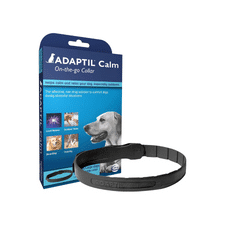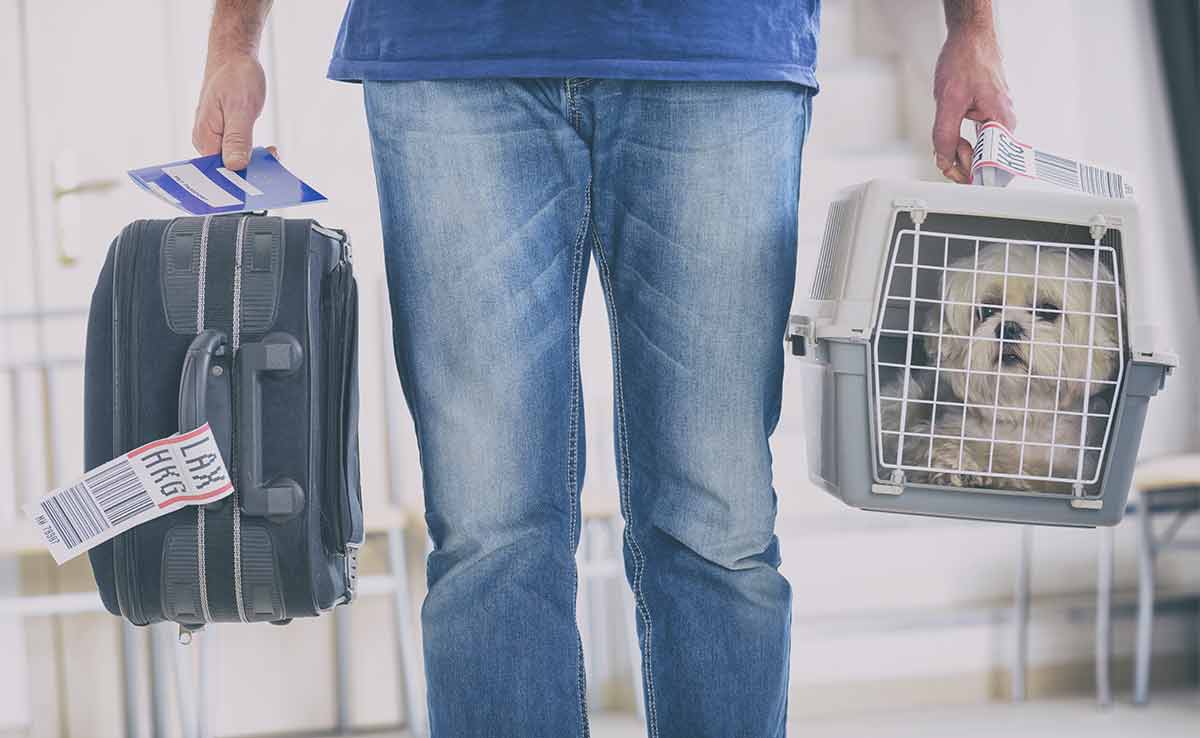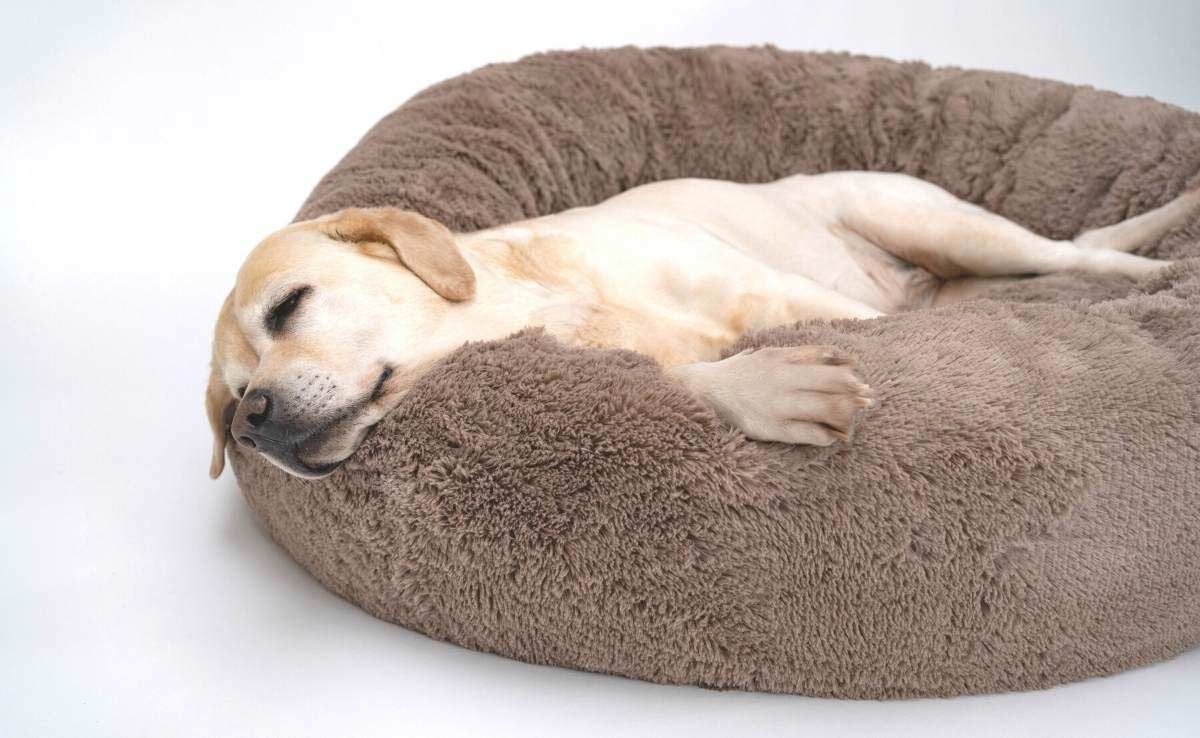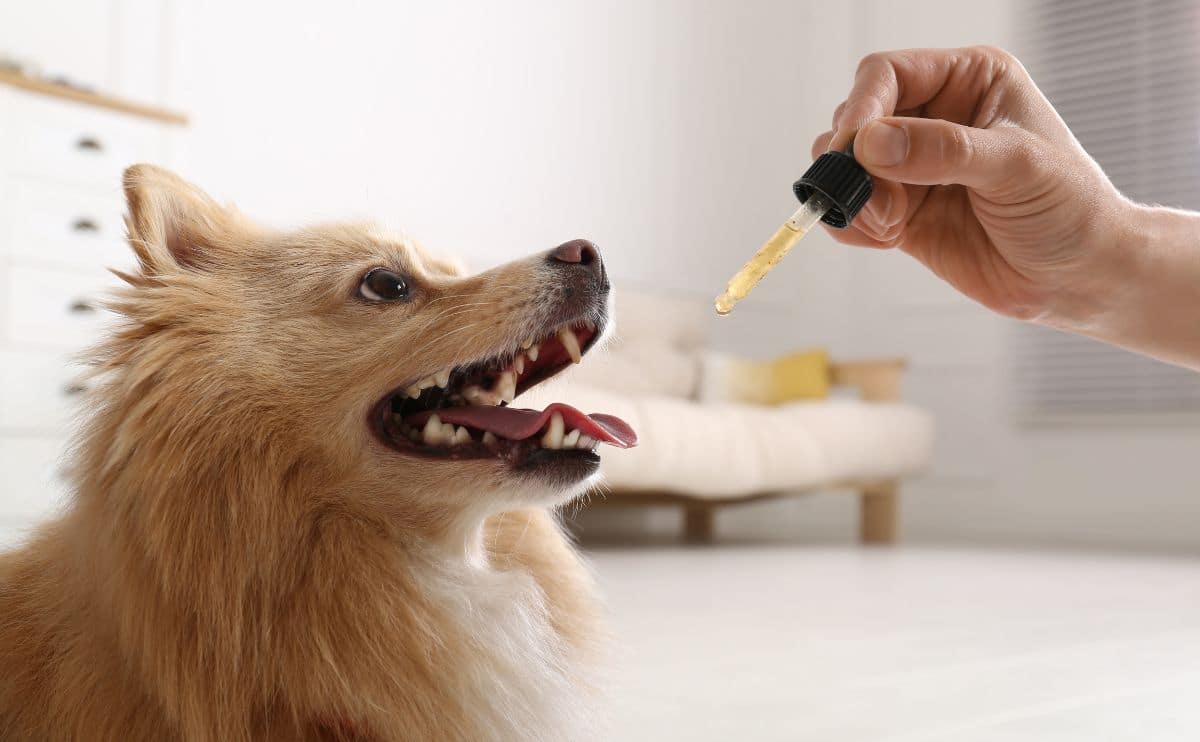How To Deal With Separation Anxiety In Dogs
When you purchase through links on our site, we may earn a commission. Here’s how it works.

Are you unable to leave home without your dog destroying the place? Or maybe your neighbor calls your landlord to complain about the howling pup? If this story sounds familiar, there’s a chance your dog is suffering from separation anxiety. So, let’s explore what dog separation anxiety is and how you can help your dog overcome his fears.
Table of Contents
What Is Dog Separation Anxiety?
When a dog with separation anxiety is left alone, he may exhibit behavioral problems. Common signs of distress include digging, scratching at doors or windows, urinating, defecating, barking, howling, and chewing. Some of these sound like he may not be housetrained yet, but these are also signs of anxiety.
What Triggers Separation Anxiety In Dogs?
When a canine becomes upset that you (or anyone he’s attached to) are leaving him alone, he feels anxious. Being separated from his loved one is difficult for him, and he may try to escape to follow or find you. Unfortunately, these escape attempts may result in self-injury or destroyed property (as mentioned above).
Are There Health Issues Associated With It?
Like humans, dogs can show signs of physical health issues from separation anxiety. For example, they may experience restlessness, insomnia, reduced energy, sadness, weight loss, and depression. Your dog might also pace the house more while you’re away than when you’re home.
Treating Separation Anxiety In Dogs
The treatment for separation anxiety in dogs can vary depending on your pup’s level of distress. Every case is different. Some will respond well to the strategies we discuss below, while others will require more persistence. We’ll go over the levels below in more detail and some coping skills for you both to work on or try at home.
Mild Cases
If your dog is experiencing a mild case of separation anxiety, we suggest trying counterconditioning. Counterconditioning is when you change an undesirable behavior to a desirable one by associating something the dog loves with the situation he dislikes.
For example, if your pup dislikes staying home alone when you go to work, you could leave a treat or food. You might consider purchasing a puzzle toy and placing a favorite treat (e.g., peanut butter) inside it. This could keep your pup occupied for 20-30 minutes. Remember that counterconditioning will only work for mild cases of separation anxiety. Very nervous dogs don’t typically eat when you aren’t home.
Moderate Cases
Are you unable to leave the house because your dog becomes anxious when you put your coat on and grab your keys? Teach your dog that just because you’re doing these things doesn’t mean you’re leaving. Instead, do these behaviors throughout the day without leaving the house. This will help reduce your dog’s stress levels, and he won’t associate it with you going anymore. This may need to be repeated multiple times a day for weeks. Anxiety is not something that will disappear overnight.
Think of it as a person with a phobia of spiders. You can’t put them in a tank with them right away. You must work up their comfort over time by slowly conditioning them. Maybe with photos of a spider, then a video, then seeing one across the room. Eventually, they’ll become comfortable enough to know there is nothing to be scared of.
Dogs who suffer from severe cases of nervousness need to be weaned into short periods of disconnection from you. These separations should not produce any anxiety, so be sure you start with a reasonable time limit. To start, try performing an out-of-sight stay (without leaving the house). Then work up to 5-minute departures and longer. You might try putting on white noise or soothing music on in the background to ease his nerves.
- For example, teach your pup to stay or sit while you go to the other side of the bathroom door. Start with a short time and gradually increase to longer periods.
- Next, grab your keys, put your coat on, and go into the bathroom.
- Once he’s comfortable, shift to encouraging the same behavior with an exit door. Note: if you always leave via the garage or front door, try implementing this technique on the back door or alternative exit first (if possible).
- Now you can incorporate counterconditioning. Give your pup a puzzle toy before you step out the door.
- Wait until he’s calm before trying another detachment session. If you repeat it too soon and your dog is still anxious, he’ll be overwhelmed by the next separation.
- While you’re exiting and entering the house, remain calm and quiet. If there is less difference between you being home and away, your dog is more likely to stay calm.
- Increasing detachment times is a slow process, and each dog is different. In the beginning, you may only be able to increase alone time by a few seconds every other session. Once you have built up to 40-minute sessions, you can increase time chunks by larger increments. Maybe increase by 5 minutes and then see how your dog handles it. Perhaps the next time, you can increase it by 15 minutes. Once he has made it up to 90 minutes, he can probably last 4-8 hours. Just remember to be patient and take your time.
Tip: consider CBD oils or treats to help calm your dog’s nerves. Learn more about the benefits of CBD for dogs.
Severe Cases
In severe cases of separation anxiety where your dog is destructive, not eating while you’re gone, or uncontrollably barking, you may need to address the underlying anxiety first before you can work on the training techniques mentioned above. Speaking to a certified behaviorist specializing in separation anxiety can help you and your dog’s specific situation. In addition to more personalized advice, they can also prescribe medication to help reduce their fears and put their minds at ease.
Similar to humans, there are several anti-anxiety drugs that dogs can take on a daily basis. Some work better for some dogs than for others. You can work with your vet to test out different “puppy Prozacs” and find the right dosage for your pet. In addition to ongoing anxiety meds, there are faster-acting “event-based” options like Clonidine that you might be able to use in conjunction or instead of for extra heightened stressful situations like travel or thunderstorms. Talk to a professional before administering any type of medication, but especially anxti-anxiety, which requires extra attention (and can interact with other supplements or preventative medicine your dog is taking).
Does Having A Second Pet Reduce Anxiety?
Companionship can help a dog feel less lonely. However, having a second dog (or a cat) doesn’t necessarily solve the issue. Some dogs are inherently more shy and anxious, whereas others are more naturally social (in which case a second dog can help).
If you’re considering getting an additional pet, try introducing your pup to the idea by sitting for a friend’s dog or having him stay at another dog’s home. It’s a safe way to test the waters and see if companionship will reduce his separation anxiety.
Does Crate Training Help With Separation Anxiety?
A crate is an excellent option for some dogs with anxiety relief because it creates a cozy den for your dog. Many reports indicate that even the most anxious dog will calm down within 5-10 minutes of you leaving. A crate will be most effective if you take the time to teach your dog that it’s a safe haven and not just a place to punish bad behavior or to stay when you leave.
It’s important to emphasize that a crate is a happy place. You can give treats and other positive experiences to encourage your dog to go in. Don’t forget to reward him again when he’s calm inside. Some pet parents even find their dogs sleeping in their crates with the door open since it’s a safe and cozy place where no one bothers them.
A crate is also an excellent way to keep your pup out of trouble. Find the best dog separation anxiety crates to fit your needs and read our guide on how to crate-train your dog. If your dog isn’t a fan, a dog gate is an alternative way to keep him in a particular area of the house. There are also beds that can help calm your dog.
However, if your dog suffers from containment anxiety, having them in a crate stacked with separation anxiety might not work. In cases where your dog might be more independent, we recommend tackling separation anxiety before introducing a crate.
Other Ways To Help Dogs With Separation Anxiety
In addition to the training, some additional items might help reduce your dog’s anxiety. Everything from toys to treats and interactive dog feeders and aromas.
Entertain Dogs While You’re Away
Another way to make dogs feel more comfortable is to leave them with their favorite toys. Some playthings are made for endless hours of fun, including the Wicked Bone, which you can control from your phone.
Should You Leave The TV On For Dogs When You’re Away?
If your dog experiences separation anxiety or gets stressed when left alone, leaving the television on may provide a distraction and a more soothing environment. Turn on Animal Planet or a dog-specific YouTube channel as a fun form of entertainment for him. However, leaving the TV on is not a substitute for proper mental and physical stimulation, regular exercise, and social interaction with your dog.
In addition to TV, you could also turn on soothing music in the background to calm your pup’s nerves and make it seem like you are home.
Keep Your Dog Occupied
We recommend giving your dog a bone or something they enjoy as it can help distract from the fact you’re gone. A LickiMat or Kong filled with peanut butter, yogurt, or mashed banana to give your dog a yummy challenge. Repetitive licking is also helpful because it releases endorphins, calming hormones, into the body. Additional benefits include stimulating saliva production (aids with digestion) and removing bacteria from the tongue (improves breath). Use caution and supervision when leaving them solo with a LikiMat, as dogs can chew through them (even the heavy-duty version).
Our Firsthand Experience With LikiMat

“We tried out the LickiMat in exchange for an honest review, and Lexie, our separation anxiety-prone King Charles Cavalier Spaniel, loves it. She licks until the mat is clean, then she falls asleep on top of it. The only downside is her long ears tend to get messy when they drag through the peanut butter. The mat washes clean, and it’s easy to store when not in use. Lexie seems to look forward to when we leave because she jumps when I get the LickiMat out.”
– Sadie C., Canine Journal
Try Calming Aromas
Something that can be used to further help with your dog’s nerves is a calming collar. We recommend the Adaptil calming collar, which is vet-recommended as a drug-free solution to comfort your dog in fearful situations. It uses your dog’s body heat to activate aromas that mimic a mother’s natural nursing pheromones. The Adaptil comes in one size and is adjustable for dogs of all sizes (and lasts up to 30 days). You might also try a pheromone diffuser kit with Adaptil (if a collar is too uncomfortable). Plug it in near their crate or by their bed to release an odorless aroma as needed.
Keep An Eye On Your Dog’s Behavior
Leaving your loved one behind can be as stressful for pet parents as it is for your pup. But there’s no need to suffer from unnecessary guilt. Your furry family member will be excited to see you when you return, no matter the circumstances.
If you need a regular Fido fix while out, a dog camera is an effective way to peek in on your pup. Most pet cams will record and have motion detection. Some even have two-way audio so you can talk to them.
However, we don’t recommend talking to them too often as it can be confusing, and they may think you’re at home when you’re not. You can also find smart feeders that can feed your dog treats with a command from your smartphone.
Play Pattern Games
Playing pattern games with your dog is not only a fun way to spend time together, but it can also provide mental stimulation and help improve their cognitive skills. Dogs are intelligent animals that thrive on mental action, and pattern games are a great way to challenge their minds and keep them entertained. A popular and easy game to play is 1, 2, 3. Slowly say “one…two…THREE” (and on three, say it with a high-pitched voice and drop a small treat on the ground). Repeat several times and go back and forth between dropping the treat to the left and right of them. After you’re finished, praise them by saying, “good boy (or girl!)”
Use The Relaxation Protocol
The relaxation protocol for dogs is a training program designed to help reduce stress and anxiety. The 15-day program developed by Dr. Karen Overall involves a series of exercises that gradually teach dogs how to relax and remain calm in various situations.
Find a quiet and comfortable place where your dog can relax without distractions, like the corner of a room. Place a comfortable mat or blanket on the ground and encourage your dog to settle down on it guiding them with a treat. Tell them to “settle” and slowly walk away for a short period of time. Gradually increase the length of each “settle” and distance from them. Release them with a word like “okay,” and praise and reward them with a treat. Repeat several times daily, every day for a couple of weeks. Consistency and positive reinforcement are key to this system. But over time, it can help be a way to calm them down before a stressful situation.
Examples Of Dog Separation Anxiety (Video)
Now that you’ve learned how to help your dog overcome separation anxiety check out this video to see how this pup has overcome his lonely and stressful situation.
The dog in this video was kenneled and left for about 2 1/2 minutes. This may not seem like a very long time. But it can seem like an eternity for dogs who suffer from severe separation anxiety. So it’s important to start training with a very brief period of unkenneled time. The transition time will vary for each pet, but try a detachment session of 5 seconds, see how your dog reacts, and then go from there.
Post-Pandemic Separation Anxiety
Studies show that pet ownership helps people cope with anxiety (especially those living alone). So, it’s no surprise that 73% of pet parents say that having a pet helped them stay sane during the lockdown, according to Adweek. During the initial stages of the COVID-19 outbreak in the U.S., the ASPCA saw a 70% increase in adoptions in April 2020 compared to the previous year. With so many dogs having their parents home full-time, they had more time to bond with their families and likely became more dependent on them.
Now, the tables are turning. As some people return to the office and school, pets may encounter separation anxiety (whether they are new to a family or not). More than a quarter of dog owners fear their pooches will suffer from anxiety when the work-from-home era ends. In fact, in the same AdWeek study, 38% of those surveyed say they’d take a pay cut if it allowed them to continue working from home with their pet. Since that’s not an option for everyone, we recommend preparing ahead of time using these tips to ease your pup back to “normal,” allowing them to adjust gradually.
Need More Help?
Remember to be patient and understand that change takes time. Additionally, each case is different, and your canine has specific needs unique to them. If you’d like help determining a plan for your pup’s condition, contact a Certified Applied Animal Behaviorist (CAAB) or a board-certified veterinary behaviorist.
There are alternatives if you prefer not to speak face-to-face with a behaviorist because of the pandemic. We recommend these excellent online dog training classes. In most cases, it is also a more affordable option.
If you cannot find a behaviorist in your area, you could contact a Certified Professional Dog Trainer (CPDT). However, not all CPDTs are qualified to mitigate separation anxiety, so be sure to ask if they are trained in this subject. Finally, check out our article on Thundershirts, another tool that can be used in your treatment plan.

